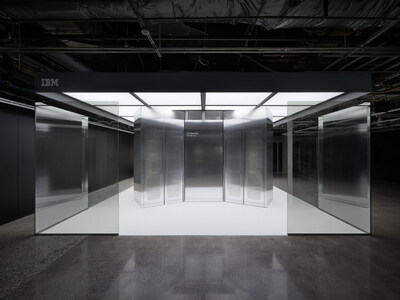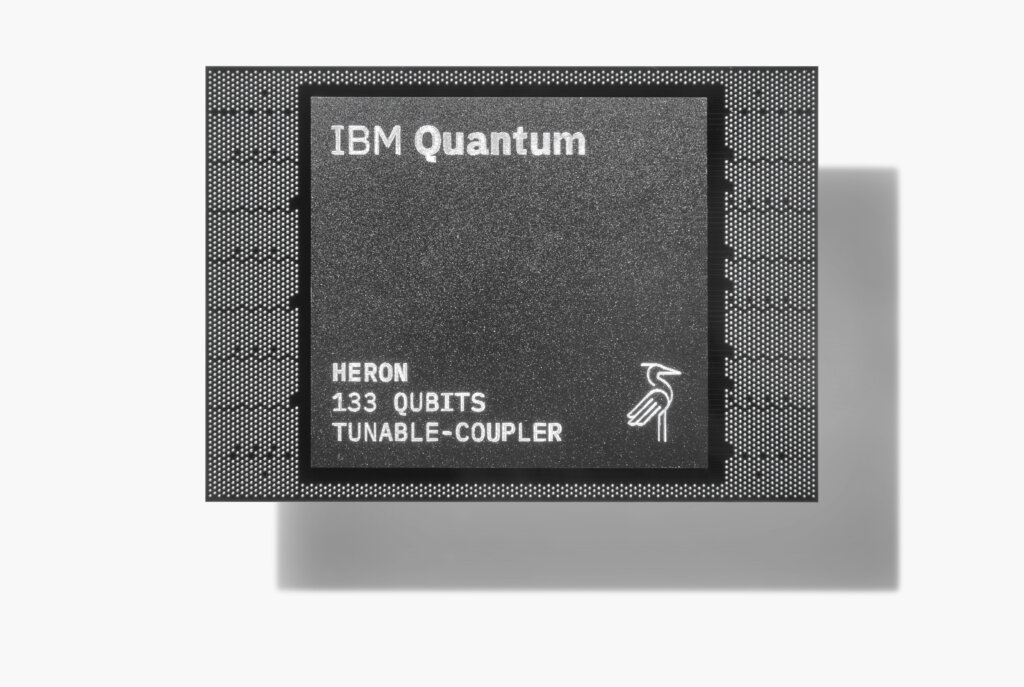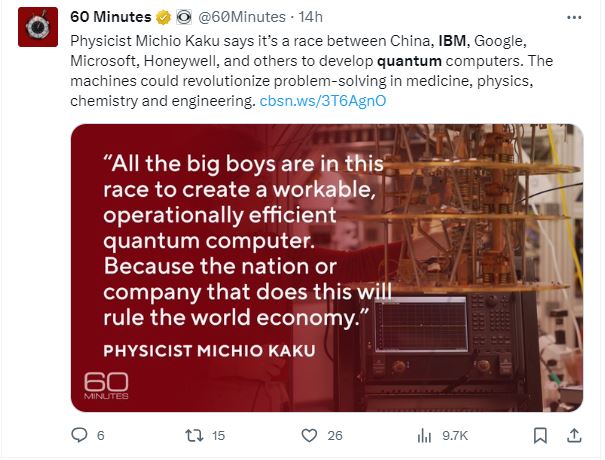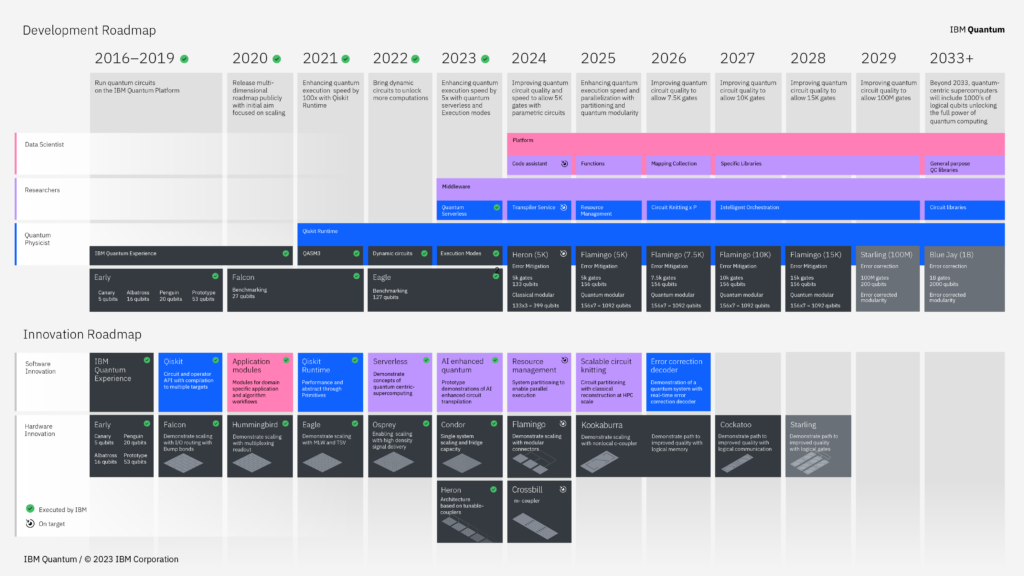
The new IBM Quantum System Two. (Credit – IBM)
IBM makes significant breakthrough in quantum computing
- IBM Quantum Heron is released as IBM’s best performing processor for quantum computing.
- It has a newly built architecture offering up to five-fold improvement in error reduction over IBM Quantum Eagle.
- IBM Quantum System Two begins operation with three IBM Heron processors, designed to make quantum-centric supercomputing a reality.
When it comes to quantum computing, no company has invested more funds and talent than IBM. In fact, IBM continues to innovate the technology, making sure that everyone is also capable of using it through its quantum network programs.
Having announced that this decade will be the decade of quantum computing, IBM has prepared a roadmap in which it hopes to make the most of the technology. That not only includes more research on the technology but also developing and testing use cases in various industries.
At the heart of quantum computing will be its quantum processors. Quantum processors use quantum bits, or qubits, to perform operations based on the principles of quantum mechanics. Unlike classical bits, which can only be in one of two states (0 or 1), qubits can be in a superposition of both states at the same time. This allows quantum processors to explore a much larger range of possibilities and solve some problems much faster than classical computers.
Quantum processors are also sensitive to noise and errors, so they require special techniques to protect and correct their quantum states. Quantum processors are currently being developed by various companies and research institutions, including IBM, Google, Microsoft, Intel, and others.

At IBM Quantum Summit 2023, ‘IBM Quantum Heron’ was released as IBM’s best performing quantum processor to date, with newly built architecture offering up to five-fold improvement in error reduction. (Credit: Ryan Lavine for IBM).
IBM’s breakthrough quantum processor
IBM’s quantum processor is one of the most advanced and powerful quantum devices in the world. It is based on superconducting qubits, which are tiny loops of metal that can store and manipulate quantum information.
IBM has been developing and improving its quantum processor for years, and unveiled its breakthrough 127-qubit quantum processor, codenamed Eagle, in 2021. This processor is expected to be the first to achieve quantum advantage, which means that it can perform tasks that are impossible or impractical for classical computers. IBM’s quantum processor has many potential applications, such as simulating complex molecules, optimizing logistics, enhancing AI, and more.
At its annual quantum summit in New York, IBM debuted its next-generation quantum processor, the Quantum Heron. The Quantum Heron is the first in a new series of utility-scale quantum processors, with an architecture engineered over the past four years to deliver IBM’s highest performance metrics and lowest error rates of any IBM quantum processor to date.
The device features 133 qubits – up from the 127 in Eagle. According to IBM, Heron is the first in its new class of performant processors, with significantly improved error rates, offering a five-fold improvement over the previous best records set by IBM Eagle. Additional IBM Heron processors will join IBM’s industry-leading, utility-scale fleet of systems over the course of the next year.

The race for quantum computing supremacy is on.
IBM Quantum System Two
At the summit, IBM also unveiled IBM Quantum System Two. Quantum System Two is the company’s first modular quantum computer and the cornerstone of IBM’s quantum-centric supercomputing architecture. Powered by three IBM Heron processors, the first IBM Quantum System Two, located in Yorktown Heights, New York, has begun operations.
“We are firmly within the era in which quantum computers are being used as a tool to explore new frontiers of science,” said Dario Gil, IBM SVP and director of research.
“As we continue to advance how quantum systems can scale and deliver value through modular architectures, we will further increase the quality of a utility-scale quantum technology stack – and put it into the hands of our users and partners who will push the boundaries of more complex problems.”
As the foundation of IBM’s next-generation quantum computing system architecture, IBM Quantum System Two combines scalable cryogenic infrastructure and classical runtime servers with modular qubit control electronics. The new system is a building block for IBM’s vision of quantum-centric supercomputing. This architecture combines quantum communication and computation, assisted by classical computing resources, and leverages a middleware layer to appropriately integrate quantum and classical workflows.
Building on its Quantum Roadmap, which has been extended to 2033, IBM plans to use this system to house its future generations of quantum processors. These future processors are intended to gradually improve the quality of operations they can run to significantly extend the complexity and size of workloads they are capable of handling.
Since demonstrating the quantum systems earlier this year, the technology can now serve as a scientific tool to explore utility-scale classes of problems in chemistry, physics, and materials beyond brute force classical simulation of quantum mechanics. Leading researchers, scientists, and engineers from organizations including the US Department of Energy’s Argonne National Laboratory, the University of Tokyo, the University of Washington and several other universities have expanded demonstrations of utility-scale quantum computing to confirm its value in exploring uncharted computational territory.

At the IBM quantum summit 2023, the company extended the IBM Quantum Development Roadmap to 2033, and has established an IBM Quantum Innovation Roadmap through 2029. (Credit: IBM).
IBM quantum computing and the University of Tokyo
The University of Tokyo in particular joins other pioneering organizations and universities as part of IBM’s recently established working groups to advance the value of quantum computing. Scientists at institutions participating in the Quantum Innovation Initiative Consortium intend to put the system’s new processor toward quantum research in bioinformatics, high energy physics, materials science, and finance, among other disciplines.
“For the first time outside North America, a quantum computer with a 127-qubit processor is now available for exclusive use with QII members,” said Hiroaki Aihara, executive vice president of the University of Tokyo.
“The limit of what can be simulated by a supercomputer is about 50 qubits, and it is possible to perform large-scale and complex calculations that would be impossible without a quantum computer. By promoting research in a wide range of fields and realizing the social implementation of quantum-related technologies, we aim to make a broad contribution to a future society with diversity and hope,” added Aihara.
READ MORE
- Safer Automation: How Sophic and Firmus Succeeded in Malaysia with MDEC’s Support
- Privilege granted, not gained: Intelligent authorization for enhanced infrastructure productivity
- Low-Code produces the Proof-of-Possibilities
- New Wearables Enable Staff to Work Faster and Safer
- Experts weigh in on Oracle’s departure from adland






